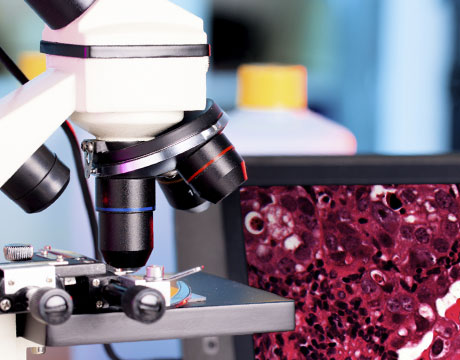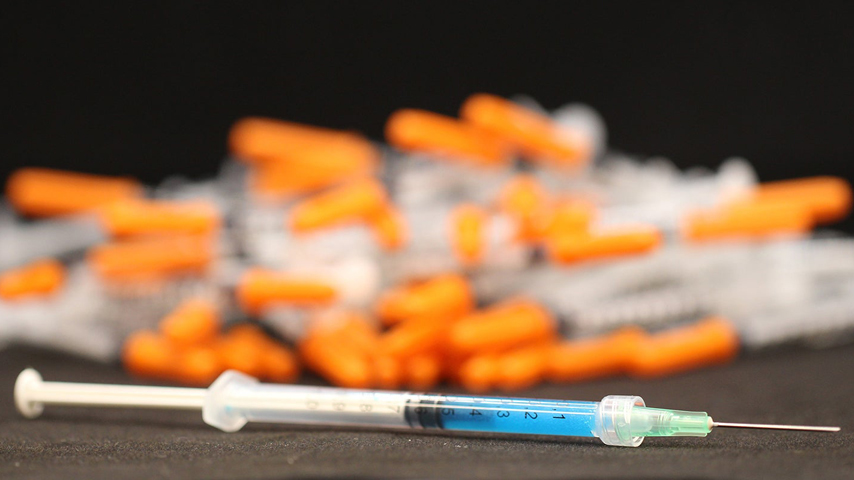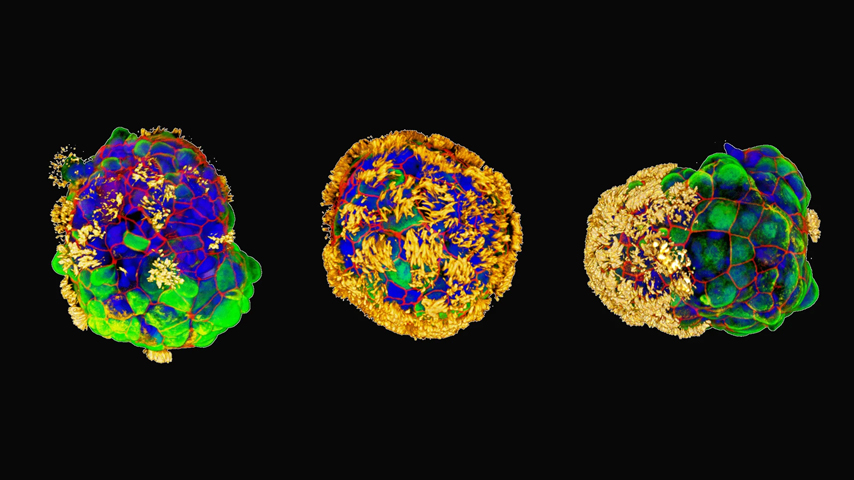Protein-Based Sensors Attack Cancer
Protein-Based Sensors Attack Cancer


Molecular engineering and synthetic biology have advanced to the stage where a wide range of proteins can be engineered to recognize and bind to virtually any DNA sequence. This ability has been, so far, used mostly for genome editing. Researchers at the Massachusetts Institute of Technology, however, have developed a unique use for these designable DNA-binding proteins: programming them to detectspecific DNA sequences, such as pathogen-related DNA, which then activates a customized cellular response, such as cell death.
The research team, led by James Collins, a professor of medical engineering and science at MIT’s Department of Biological Engineering and Institute of Medical Engineering and Science, and postdoctoral associate Shimyn Slomovic, published their results in a recent issue ofNature Methods. “One might compare it to an alarm system that is equipped to contact security for a smart response when an intruder is detected,” states Slomovic.
How It Works
This cellular detection system uses a type of DNA-binding protein known as “zinc fingers,” which can be programmed to recognize any DNA sequence. The team then built in an action response that is triggered by the recognition event.
Synthetic zinc fingers derived from mammalian proteins were combined with intein proteins derived from yeast (inteins are short proteins that can be inserted into larger proteins, splitting them in half). The split protein pieces only become functional after the intein removes itself, allowing the two parts to join together and form a functional protein, which then activates a designated gene. A fluorescent protein (GFP) derived from jellyfish was linked to the zinc fingers’ recognition of a DNA sequence from an adenovirus; cell infected with this virus would then glow green.
“At the onset of the study, we envisioned a platform that was sufficiently robust to operate in a human cell, yet also specific enough to distinguish between a pathogen DNA target and the normal genome present in the cell,” says Slomovic. “It was exciting to reach a point in which the system could positively identify and report the infection of live replicating adenovirus inside living cells.”
Infected cells could also be killed. The system was programmed to produce proteins that alert immune cells to fight the infection (instead of simply identifying them by using GFP). Detection of the DNA target was linked to increased production of an enzyme called NTR. This enzyme activates a harmless drug precursor called CB 1954, which the researchers added to the petri dish where the cells were growing. When activated by NTR, CB 1954 kills the cells.
“Since this is modular, you can potentially evoke any response that you want,” says Slomovic. “The cell can be programmed to kill itself, or to secrete proteins that will allow the immune system to identify it as an enemy cell so the immune system can take care of it.”
Future Applications
Collins and Slomovic are now adapting their technology to detect latent HIV proviruses, which remain dormant in some infected cells even after treatment.
“Latent HIV provirus is pretty much the final barrier to curing AIDS, which currently is incurable simply because the provirus sequence is there, dormant, and there aren’t any ways to eradicate it,” Slomovic says. “Another possible use of this system would be assisting in the production of cell lines that scientists have engineered to contain critical genomic edits, such as resistance to HIV infection. Positive cells could be rapidly identified, streamlining this process. We also think the platform could be used to detect RNA-based viruses or used for diagnostics in patient samples.”
In the near-term, however, perhaps the most immediate use of the system will be as a diagnostic tool that allows researchers to verify the results of experiments that are attempting to genetically alter types of cellular material. Yet another application would be keeping bioreactors free from pathogens. “Many important therapeutic drugs and vaccines are generated in large bioreactors in which mammalian cells are cultured to produce large quantities,” adds Slomovic. “Bioreactors are susceptible to pathogen infection and a DNA sense-and-respond system could help arm these valuable cells with ways to prevent or contain such infections.”
Mark Crawford is an independent writer.
Explore the latest trends in bioengineering at ASME’s Global Congress on NanoEngineering for Medicine and Biology.
The cell can be programmed to kill itself, or to secrete proteins that will allow the immune system to identify it as an enemy cell so the immune system can take care of it.Shimyn Slomovic, postdoctoral associate, MIT



